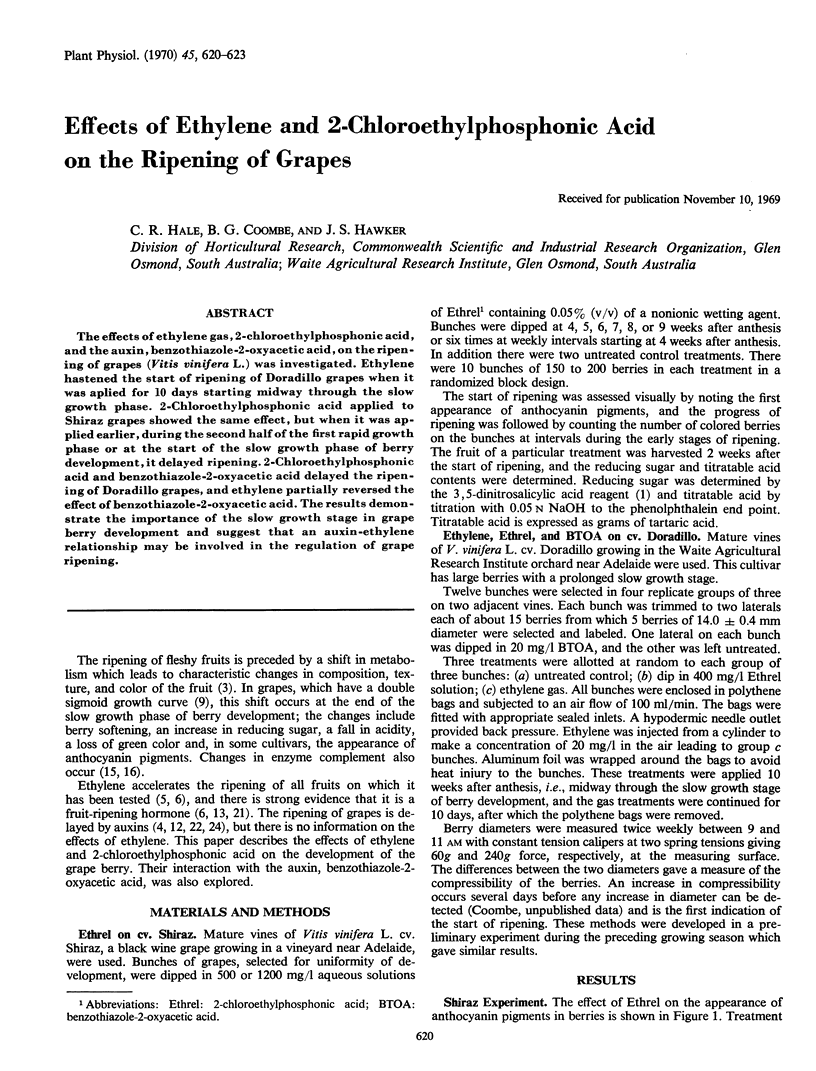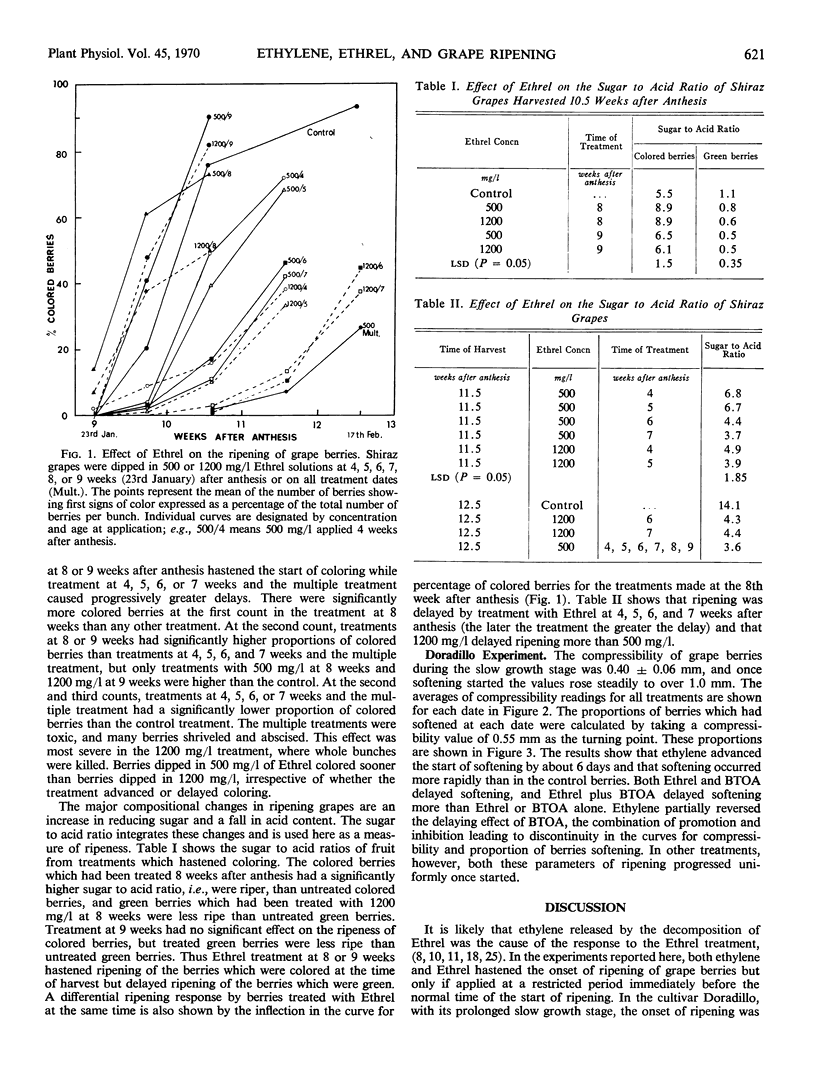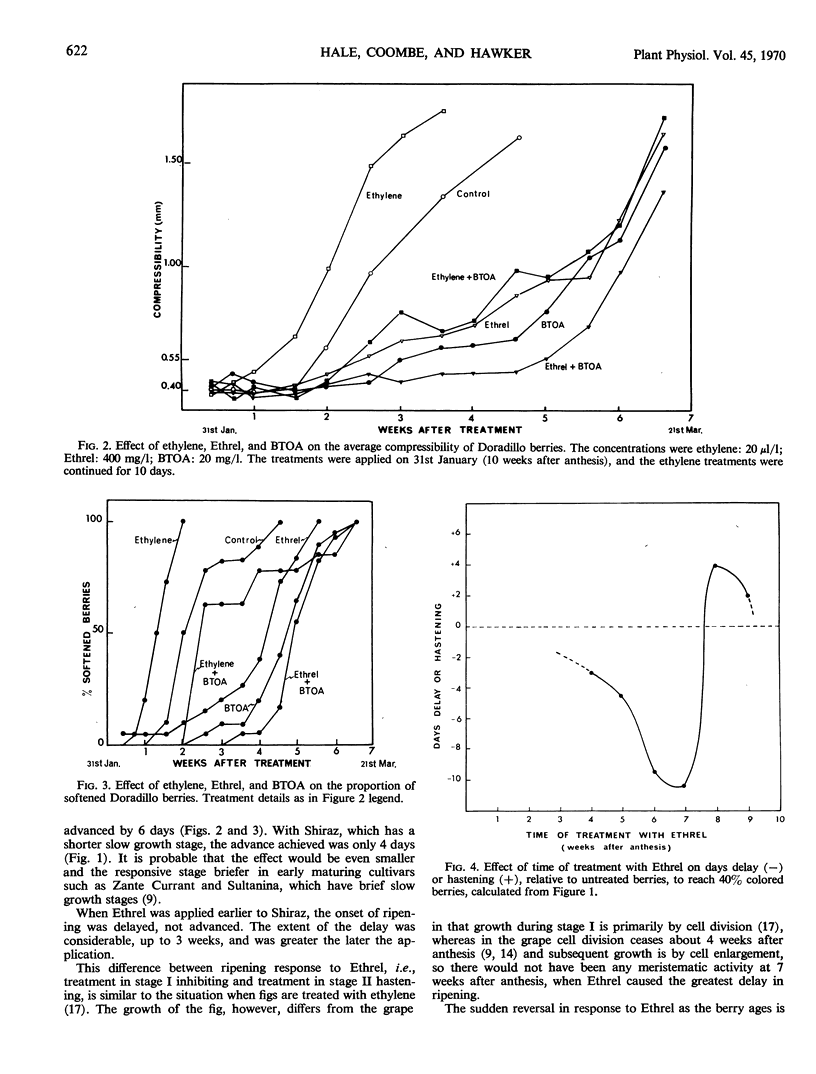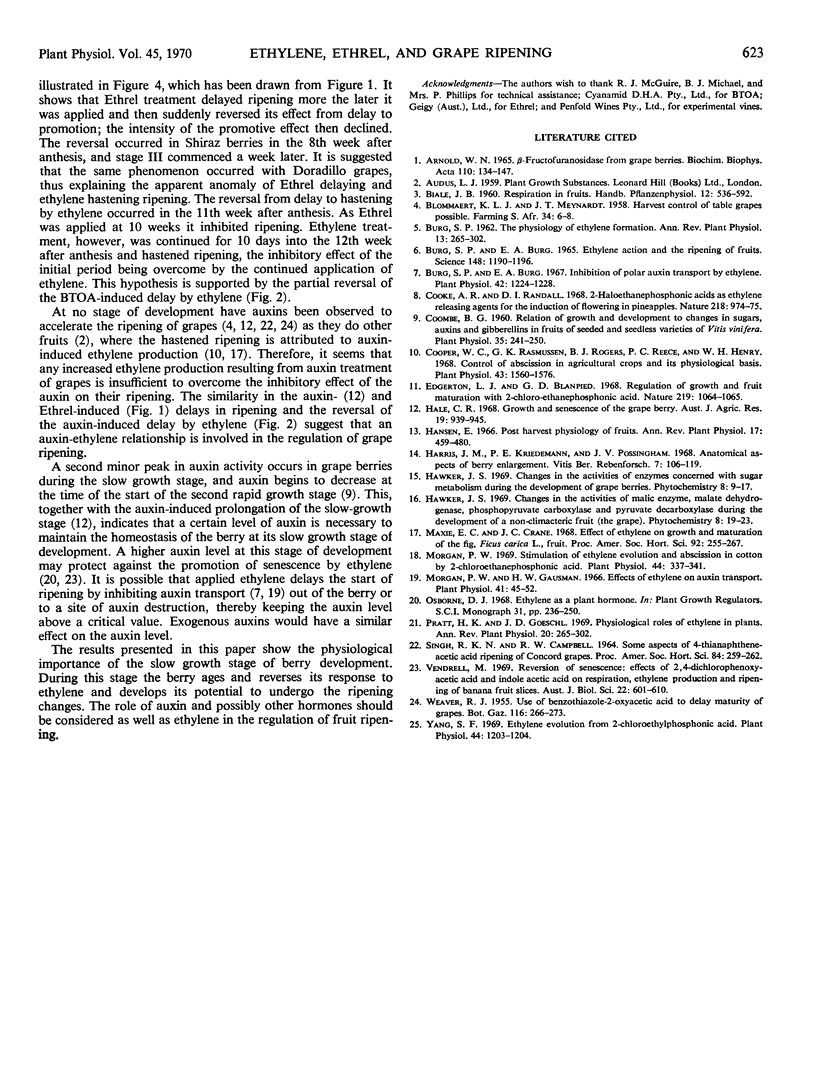Abstract
The effects of ethylene gas, 2-chloroethylphosphonic acid, and the auxin, benzothiazole-2-oxyacetic acid, on the ripening of grapes (Vitis vinifera L.) was investigated. Ethylene hastened the start of ripening of Doradillo grapes when it was aplied for 10 days starting midway through the slow growth phase. 2-Chloroethylphosphonic acid applied to Shiraz grapes showed the same effect, but when it was applied earlier, during the second half of the first rapid growth phase or at the start of the slow growth phase of berry development, it delayed ripening. 2-Chloroethylphosphonic acid and benzothiazole-2-oxyacetic acid delayed the ripening of Doradillo grapes, and ethylene partially reversed the effect of benzothiazole-2-oxyacetic acid. The results demonstrate the importance of the slow growth stage in grape berry development and suggest that an auxin-ethylene relationship may be involved in the regulation of grape ripening.
Full text
PDF



Selected References
These references are in PubMed. This may not be the complete list of references from this article.
- Arnold W. N. Beta-fructofuranosidase from grape berries. Biochim Biophys Acta. 1965 Oct 25;110(1):134–147. doi: 10.1016/s0926-6593(65)80102-3. [DOI] [PubMed] [Google Scholar]
- BURG S. P., BURG E. A. ETHYLENE ACTION AND THE RIPENING OF FRUITS. Science. 1965 May 28;148(3674):1190–1196. doi: 10.1126/science.148.3674.1190. [DOI] [PubMed] [Google Scholar]
- Burg S. P., Burg E. A. Inhibition of polar auxin transport by ethylene. Plant Physiol. 1967 Sep;42(9):1224–1228. doi: 10.1104/pp.42.9.1224. [DOI] [PMC free article] [PubMed] [Google Scholar]
- Cooke A. R., Randall D. I. 2-Haloethanephosphonic acids as ethylene releasing agents for the induction of flowering in pineapples. Nature. 1968 Jun 8;218(5145):974–975. doi: 10.1038/218974a0. [DOI] [PubMed] [Google Scholar]
- Coombe B. G. Relationship of Growth and Development to Changes in Sugars, Auxins, and Gibberellins in Fruit of Seeded and Seedless Varieties of Vitis Vinifera. Plant Physiol. 1960 Mar;35(2):241–250. doi: 10.1104/pp.35.2.241. [DOI] [PMC free article] [PubMed] [Google Scholar]
- Cooper W. C., Rasmussen G. K., Rogers B. J., Reece P. C., Henry W. H. Control of abscission in agricultural crops and its physiological basis. Plant Physiol. 1968 Sep;43(9 Pt B):1560–1576. [PMC free article] [PubMed] [Google Scholar]
- Edgerton L. J., Blanpied G. D. Regulation of growth and fruit maturation with 2-chloroethanephosphonic acid. Nature. 1968 Sep 7;219(5158):1064–1065. doi: 10.1038/2191064a0. [DOI] [PubMed] [Google Scholar]
- Morgan P. W., Gausman H. W. Effects of ethylene on auxin transport. Plant Physiol. 1966 Jan;41(1):45–52. doi: 10.1104/pp.41.1.45. [DOI] [PMC free article] [PubMed] [Google Scholar]
- Morgan P. W. Stimulation of ethylene evolution and abscission in cotton by 2-chloroethanephosphonic Acid. Plant Physiol. 1969 Mar;44(3):337–341. doi: 10.1104/pp.44.3.337. [DOI] [PMC free article] [PubMed] [Google Scholar]
- Yang S. F. Ethylene evolution from 2-chloroethylphosphonic Acid. Plant Physiol. 1969 Aug;44(8):1203–1204. doi: 10.1104/pp.44.8.1203. [DOI] [PMC free article] [PubMed] [Google Scholar]


